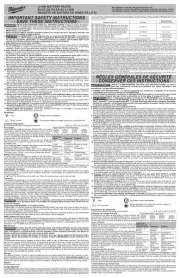Milwaukee 48-11-1851 Handleiding
Bekijk gratis de handleiding van Milwaukee 48-11-1851 (20 pagina’s), behorend tot de categorie Accu. Deze gids werd als nuttig beoordeeld door 66 mensen en kreeg gemiddeld 4.8 sterren uit 33.5 reviews. Heb je een vraag over Milwaukee 48-11-1851 of wil je andere gebruikers van dit product iets vragen? Stel een vraag
Pagina 1/20

Cat. No. / No de cat.
48-59-1801
2710-20
OPERATOR'S MANUAL
MANUEL de L'UTILISATEUR
MANUAL del OPERADOR
WARNING To reduce the risk of injury, user must read and understand operator's manual.
AVERTISSEMENT An de réduire le risque de blessures, l'utilisateur doit lire et bien
comprendre le manuel.
ADVERTENCIA Para reducir el riesgo de lesiones, el usuario debe leer y entender el manual.
Cat. No. / No de cat.
48-11-1815
48-11-1820
Cat. No. / No de cat.
48-11-1828
48-11-1840
48-11-1850
48-11-1860
48-11-1890
New batteries must be charged before
rst use.
Les batteries neuves doivent être
chargées avant leur utilisation initiale.
Las baterías nuevas se deben cargar
antes de usarlas por primera vez.
CAT.
M18™ LI-ION BATTERY CHARGERS
M18™ LI-ION BATTERY PACKS
CHARGEURS AU LITHIUM-ION M18™
BLOC DE PILES AU LITHIUM-ION M18™
CARGADORS PARA BATERÍAS DE IONES DE LITIO DE M18™
PAQUETE DE BATERÍA DE IONES DE LITIO DE M18™

2
1.
SAVE THESE INSTRUCTIONS - THIS OP-
ERATOR’S MANUAL CONTAINS IMPORTANT
SAFETY AND OPERATING INSTRUCTIONS
FOR MILWAUKEE LI-ION BATTERY PACKS
AND THE MILWAUKEE LI-ION CHARGER.
2. BEFORE USING THE BATTERY PACK AND
CHARGER, READ THIS OPERATOR’S MAN-
UAL, YOUR TOOL OPERATOR’S MANUAL,
AND ALL LABELS ON THE BATTERY PACK,
CHARGER AND TOOL.
3.
CAUTION
TO REDUCE THE RISK OF IN-
JURY, CHARGE MILWAUKEE
LI-ION PACKS ONLY IN THEIR MILWAUKEE
LI-ION CHARGER. Other types of chargers may
cause personal injury or damage. Battery pack
and charger are not compatible with V™-technology
or NiCd systems. Do not wire a battery pack to a
power supply plug or car cigarette lighter. Battery
packs will be permanently disabled or damaged.
4. USE MILWAUKEE LI-ION PACKS ONLY ON
COMPATIBLE MILWAUKEE LI-ION TOOLS.
Battery pack and charger are not compatible with
V™-technology or NiCd systems. Use with other
tools may result in a risk of re, electric shock or
personal injury.
5. AVOID DANGEROUS ENVIRONMENTS. Do not
charge battery pack in rain, snow, damp or wet
locations. Do not use battery pack or charger in
the presence of explosive atmospheres (gaseous
fumes, dust or flammable materials) because
sparks may be generated when inserting or remov-
ing battery pack, possibly causing re.
6. CH
ARGE IN A WELL VENTILATED AREA. Do not
block charger vents. Keep them clear to allow proper
ventilation. Do not allow smoking or open ames near
a charging battery pack. Vented gases may explode.
7. MAINTAIN CHARGER CORD. When unplugging
charger, pull plug rather than cord to reduce the risk
of damage to the electrical plug and cord. Never car-
ry charger by its cord. Keep cord from heat, oil and
sharp edges. Make sure cord will not be stepped
on, tripped over or subjected to damage or stress.
Do not use charger with damaged cord or plug.
Have a damaged charger replaced immediately.
8. DO NOT USE AN EXTENSION CORD UNLESS IT
IS ABSOLUTELY NECESSARY. Using the wrong,
damaged or improperly wired extension cord could
result in the risk of re and electrical shock. If an
extension cord must be used, plug the charger
into a properly wired 16 gauge or larger extension
cord with pins that are the same number, size and
shape as the pins on the charger. Make sure that
the extension cord is in good electrical condition.
9.
CHARGER 48-59-1801 IS RATED FOR 120 VOLT
AC ONLY. CHARGER 2710-20 IS RATED FOR
12 VOLT DC AND 120 VOLT AC. Charger must
be plugged into an appropriate receptacle.
10. USE ONLY RECOMMENDED ATTACHMENTS.
Use of an attachment not recommended or sold
by the battery charger or battery pack manufac-
turer may result in a risk of re, electric shock or
personal injury.
11. UNPLUG CHARGER when not in use. Remove
battery packs from unplugged chargers.
12. TO REDUCE THE RISK OF ELECTRIC SHOCK,
always unplug charger before cleaning or mainte-
nance. Do not allow water to ow into AC/DC plug.
Use a Ground Fault Circuit Interrupter (GFCI) to
reduce shock hazards.
13. DO NOT BURN OR INCINERATE BATTERY
PACKS. Battery packs may explode, causing per
-
sonal injury or damage. Toxic fumes and materials
are created when battery packs are burned.
14. DO NOT CRUSH, DROP, OR DAMAGE battery
pack. Do not use a battery pack or charger that
has received a sharp blow, been dropped, run
over, or damaged in any way (e.g., pierced with
a nail, hit with a hammer, stepped on).
15. DO NOT DISASSEMBLE. Incorrect reassembly
may result in the risk of electric shock, re or
exposure to battery chemicals. If it is damaged,
take it to a MILWAUKEE service facility.
16. BATTERY CHEMICALS CAUSE SERIOUS
BURNS. Never allow contact with skin, eyes, or
mouth. If a damaged battery pack leaks battery
chemicals, use rubber or neoprene gloves to dis-
pose of it. If skin is exposed to battery uids, wash
with soap and water and rinse with vinegar. If eyes
are exposed to battery chemicals, immediately
ush with water for 20 minutes and seek medical
attention. Remove and dispose of contaminated
clothing.
17. DO NOT SHORT CIRCUIT.
A battery pack will short
circuit if a metal object makes a connection between
the positive and negative contacts on the battery
pack. Do not place a battery pack near anything
that may cause a short circuit, such as coins, keys
or nails in your pocket. Do not allow uids to ow into
battery pack. Corrosive or conductive uids, such as
seawater, certain industrial chemicals, and bleach or
bleach containing products, etc., can cause a short
circuit. A short circuited battery pack may cause
re, personal injury, and product damage.
18. STORE YOUR BATTERY PACK AND CHARGER
in a cool, dry place. Do not store battery pack
where temperatures may exceed 120°F (50°C)
such as in direct sunlight, a vehicle or metal build-
ing during the summer.
19. ALWAYS USE A SIDE HANDLE when using a
9.0 Ah or higher capacity battery pack; the output
torque of some tools may increase. If your drill/
driver did not come with a side handle, visit www.
milwaukeetool.com for the appropriate accessory
handle.
READ AND SAVE
ALL INSTRUCTIONS
FOR FUTURE
REFERENCE.
IMPORTANT SAFETY INSTRUCTIONS
WARNING
READ AND UNDERSTAND ALL INSTRUCTIONS. Failure to follow all
instructions listed below, may result in electric shock, re and/or serious personal injury.
SAVE THESE INSTRUCTIONS

3
SYMBOLOGY
Volts
Direct Current
Alternating Current
Double Insulated
Properly Recycle Batteries
Hertz
Amps
C US
UL Listing for Canada and U.S.
FUNCTIONAL
DESCRIPTION
CAT.
1. Contacts
2. Release buttons
3. Fuel Gauge button
4. Fuel Gauge
5. Electrical contacts
6. Bay
7. Serial Number (on bottom of charger)
8. Vents
9. Light indicators - when a battery pack is inserted
into the charger, the light will indicate the following:
Continuous red: Charging
Continuous green light: Charging is complete
Flashing red: Battery is too hot/cold - Charging will
begin when battery reaches correct
charging temperature
Flashing red/green: Damaged or faulty battery pack
2
4
1
7
9
8
2
5
6
3
SPECIFICATIONS
Cat. No. 48-59-1801 ...............................................
Input Volts 120 AC ....................................................
Input Amps 2.1 AC....................................................
Output Volts 18 DC ..................................................
Output Amps ................................................ 3.1 DC
Cat. No. 2710-20 ....................................................
Input Volts 120 AC ....................................................
Input Amps 2.1 AC....................................................
Input Volts 12 DC .....................................................
Input Amps 6.5 DC...................................................
Output Volts 18 DC ..................................................
Output Amps ................................................ 3.1 DC
Battery Cat. No.................................... 48-11-1815
Volts 18 DC ..............................................................
Battery Cat. No.................................... 48-11-1820
Volts 18 DC ..............................................................
Battery Cat. No.................................... 48-11-1828
Volts 18 DC ..............................................................
Battery Cat. No.................................... 48-11-1840
Volts 18 DC ..............................................................
Battery Cat. No.................................... 48-11-1850
Volts 18 DC ..............................................................
Battery Cat. No.................................... 48-11-1860
Volts 18 DC ..............................................................
Battery Cat. No.................................... 48-11-1890
Volts 18 DC ..............................................................
Recommended Ambient
Charging Temperature ................... 40°F to 105°F
MILWAUKEE LI-ION
BATTERY PACK
OPERATION
Fuel Gauge
Use the Fuel Gauge to determine the battery pack's
remaining run time. Press the Fuel Gauge button to
display the lights. The Fuel Gauge will light up for
2-3 seconds. When less than 10% of charge is left,
1 light on the fuel gauge will ash slowly.
78-100%
55-77%
33-54%
10-32%
Less than 10% if bottom light is ashing
Approximate Run
Time Remaining
NOTE: If the Fuel Gauge doesn't appear to be
working, place the battery pack on the charger and
charge as needed.
Compared to NiCd battery pack types, MILWAUKEE
Li-Ion battery packs deliver fade-free power for their
entire run time. The tool will not experience a slow,
gradual loss of power as you work. To signal the
end of discharge, 1 light on the fuel gauge will ash
quickly for 2-3 seconds and the tool will not run.
Charge the battery pack.
Product specificaties
| Merk: | Milwaukee |
| Categorie: | Accu |
| Model: | 48-11-1851 |
Heb je hulp nodig?
Als je hulp nodig hebt met Milwaukee 48-11-1851 stel dan hieronder een vraag en andere gebruikers zullen je antwoorden
Handleiding Accu Milwaukee
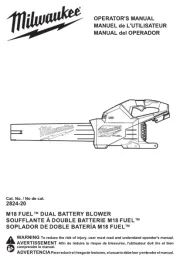
14 Juli 2025

2 December 2024

2 December 2024

2 December 2024
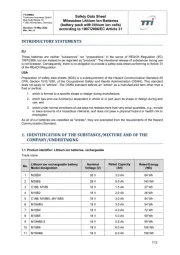
2 December 2024

2 December 2024

2 December 2024

2 December 2024

2 December 2024
Handleiding Accu
- Aluratek
- Cocraft
- Variotek
- Belkin
- Hyundai
- Epson
- Sandberg
- Aim TTi
- JVC
- Conrad
- Neewer
- Petzl
- Daewoo
- Duracell
- Venom
Nieuwste handleidingen voor Accu
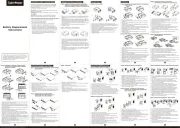
28 Juli 2025
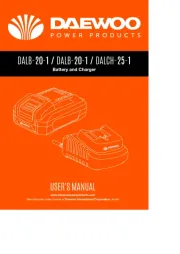
15 Juli 2025
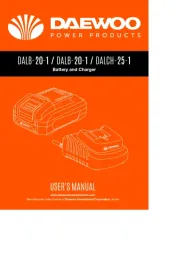
5 Juli 2025
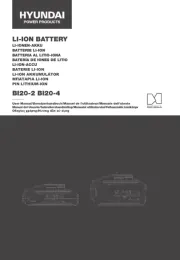
1 Juli 2025
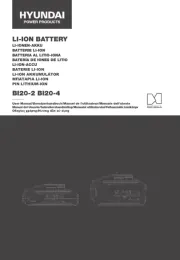
30 Juni 2025
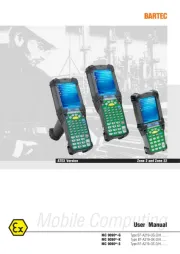
20 Juni 2025
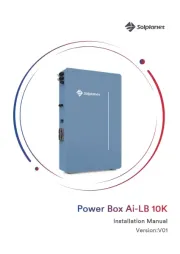
11 Juni 2025
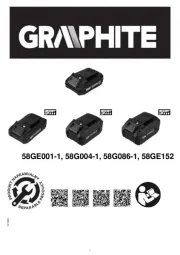
10 Juni 2025
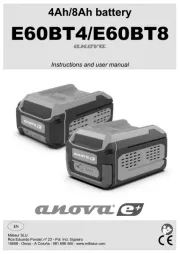
24 Mei 2025
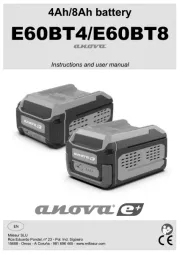
24 Mei 2025
